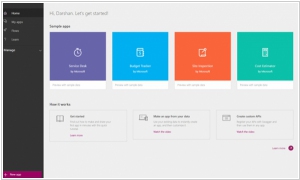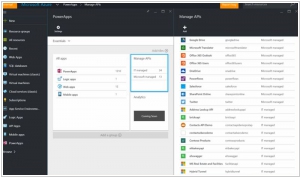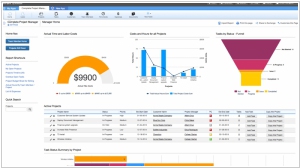Microsoft PowerApps vs QuickBase
May 21, 2023 | Author: Michael Stromann
Microsoft PowerApps and QuickBase are both low-code development platforms that allow users to build custom business applications without extensive coding knowledge. However, they differ in several aspects.
Microsoft PowerApps is part of the Microsoft Power Platform and integrates seamlessly with other Microsoft products such as SharePoint, Teams, and Dynamics 365. It offers a wide range of connectors and pre-built templates, enabling users to create mobile and web applications that leverage data from various sources. PowerApps is well-suited for businesses that are heavily invested in the Microsoft ecosystem and seek a comprehensive solution for building custom applications.
QuickBase, on the other hand, is a cloud-based platform that emphasizes rapid application development. It offers a user-friendly interface, intuitive drag-and-drop functionality, and a robust set of features for creating custom applications. QuickBase provides extensive database capabilities, data integration options, and automation features, making it suitable for businesses that require flexible and scalable solutions.
One key difference is the pricing model. Microsoft PowerApps is typically licensed through Microsoft 365 or Dynamics 365 plans, making it a part of a broader package. QuickBase, on the other hand, offers different pricing plans based on the number of users and the level of functionality needed.
Another distinction lies in the level of customization and control. PowerApps offers more extensive customization options through the use of Microsoft's Power Platform and its ecosystem of tools. QuickBase, on the other hand, provides a more structured and guided approach to application development, which can be beneficial for users who prefer a more streamlined experience.
See also: Top 10 Low-Code Platforms
Microsoft PowerApps is part of the Microsoft Power Platform and integrates seamlessly with other Microsoft products such as SharePoint, Teams, and Dynamics 365. It offers a wide range of connectors and pre-built templates, enabling users to create mobile and web applications that leverage data from various sources. PowerApps is well-suited for businesses that are heavily invested in the Microsoft ecosystem and seek a comprehensive solution for building custom applications.
QuickBase, on the other hand, is a cloud-based platform that emphasizes rapid application development. It offers a user-friendly interface, intuitive drag-and-drop functionality, and a robust set of features for creating custom applications. QuickBase provides extensive database capabilities, data integration options, and automation features, making it suitable for businesses that require flexible and scalable solutions.
One key difference is the pricing model. Microsoft PowerApps is typically licensed through Microsoft 365 or Dynamics 365 plans, making it a part of a broader package. QuickBase, on the other hand, offers different pricing plans based on the number of users and the level of functionality needed.
Another distinction lies in the level of customization and control. PowerApps offers more extensive customization options through the use of Microsoft's Power Platform and its ecosystem of tools. QuickBase, on the other hand, provides a more structured and guided approach to application development, which can be beneficial for users who prefer a more streamlined experience.
See also: Top 10 Low-Code Platforms
Microsoft PowerApps vs QuickBase in our news:
2016. Microsoft launched its no-coding app builder

Microsoft has introduced a new service called PowerApps, enabling individuals to create basic business apps without requiring any coding skills. These apps are compatible with both web and mobile platforms, including the PowerApps apps for iOS and Android. Developing apps in PowerApps primarily involves a drag-and-drop approach. While the service provides an online dashboard, the actual design work is performed using a Windows 10 desktop app. Additionally, PowerApps offers several pre-designed templates for common use cases. Although building new apps from scratch is generally straightforward, it may not be as effortless as portrayed in Microsoft's marketing materials.




